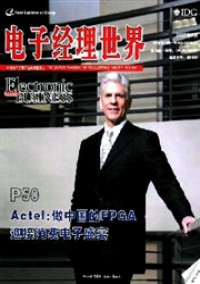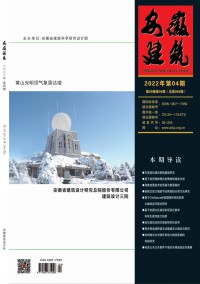倒装句的用法
倒装句的用法范文第1篇
全部倒装是指句子中整个谓语都提到主语前面,即谓语+主语的语序。只有部分谓语提到主语的前面,即“助动词/情态动词+主语+…”的结构,称之为部分倒装。
在日常生活中,倒装句是我们经常使用的一种修辞手法,它能使得我们的语言变得更加丰富而不单调,也能使感情的表达更加多样化。以下是一些常见的倒装句。
由引导词there引起的完全倒装句
there引出的倒装句,表示完全倒装。除了最常见的therebe句型以外,there还可以接appear,come,remain等动词,构成完全倒装句。例如:
Thereappearedtobeawomaninred.
那里有个穿红衣服的女人。
在这些句子中,appear,come,remain等词都可译成“有”的意思。
但是在there引出的倒装句中,如果主语是代词,就不能用完全倒装句,而要用部分倒装句。例如:
Therecomesapostman.
有个邮递员来了。
由here,now,then引起的完全倒装句
here引出的倒装句也十分常见,我们在日常生活中一直在用。例如:
出租车来了。
Hereisacupofteaforyou.
这里是给你的一杯茶。
另外,here也可以和be一起用,表示“有”的意思。例如:
Herearesomebooksforyou.
这里是几本给你的书。
now虽然不是常用,但在课堂上老师常常会说:
Nowcomesyourturn.
表示“现在该你了”。
有时,还可以看到then引出的倒装句。例如:
Thencameanewdifficulty.然后又产生了一个新的困难。
当介词或是介词短语在句首时的完全倒装
表示方向的副词out,in,up,down等词置于句首时,要用全部倒装。例如:
Inthedoorwaystoodaman.
门道里站着一个人。
某些状语从句中的部分倒装语序
在状语从句里的倒装语序,比较常见的是条件状语从句,这个时候连词if可以省略(主要是用于虚拟条件句当中)。例如:
Shouldyourequireanything,givemearing.
如果需要什么,可以给我打电话。
Ifyoushouldrequireanythinggivemearing.
这里把If省去了,并将should提到主语you前面,就构成了一句倒装句。
另外,在让步状语从句里也会遇到倒装语序,这样的句子往往是把表语或部分谓语提到主语前面。例如:
Tryashemay,hewillnotpasstheexam.
尽管他可能会努力,他是不会通过考试的。
还有的时候,也可以将状语提前,构成倒装句。例如:
Hewasunabletomakemuchprogress,hardashetried.
尽管他作了很大努力,却没能取得多大进展。
否定词或部分否定词、频度副词等在句首时的部分倒装
当某些有否定意思的副词放在句首时,句子常常是用部分倒装语序。例如:
Hardlyhadshearrivedwhenitbegantosnow.
她刚到就下起雪来。
这句话中Hardly是有否定的意思在里面的,表示“刚”的意思。
还有一些别的句子,例如:
Notoncehasshefailedtokeepherpromise.
她没有一次不遵守她的承诺。
当然还有一些频度副词,如often,well,manyatime,nowandagain等,它们放在句首时,也会有部分倒装现象。例如:
Oftendidwewarnthemnottodoso.
我们曾常常警告他们,不要这样做。
ManyatimehasJohngivenmegoodadvice.
约翰曾多次给过我好的建议。
一些短语移到句首时也能引起倒装语序。例如:
Onlyinthiswaycanourhonourbesaved.
只有这样,才能保住我们的荣誉。
分词或某些表语移到句首的部分倒装的情况
当进行时态中的分词移到句首时,表示对这个动作加以强调。例如:
Lyingonthefloorwasaboyagedaboutsixteen.
躺在地板上的是一个大约16岁的男孩。
有时,过去分词也可以提到主语前。例如:
Seatedonthegroundisayoungman.
坐在地上的是一个年轻男人。
特定词组的搭配时所运用的倒装语序
当Nosooner…than…/Hardly…when…/Scarcely…when…等词语位于句首时,常使用部分倒装的语序,并且,倒装部分一般使用过去完成时以表示过去的状态。例如:
Scarcelyhadhegoneoutwhenitbegantorain.
他刚一出来天就下雨了。
Hardlyhadshearrivedwhenitbegantosnow.
她刚到就下起雪来了。论文范文
Nosoonerhadhegonetosleepthanthetelephonerangonceagain.
他刚睡着电话又响了。
另外,当Not…until…/So…that…等词放在句首引导句子时,通常也使用部分倒装的语序,但这些句子一般遵循的是从句不倒装,主句倒装的原则。例如:
Soloudlydidshespeakthatevenpeopleinthenextroomcouldhearher.
她讲话声音那么大,隔壁房间里的人都听得见。
在这样的句子中,使用的往往是一般过去式,而不是用过去完成时来表示过去状态。
并且,在用Notonly…butalso…连接两个句子时,往往是在notonly引导的部分进行部分倒装,而butalso引导的部分不受影响。例如:
Notonlydidherefusethegift,healsoseverelycriticizedthesender.
他不仅拒绝了礼物,还严厉的批评了送礼物的人。
当然,在许多情况下,也有notonly连接的部分也不倒装的情况,即在notonly…butalso…连接两个主语时不改变原有语序。例如:
NotonlyyoubutalsoIamfondofmusic.
不仅你,而且我也很喜欢音乐。
除了上面提到的常见倒装语序外,我们还能看到以下一些形式的倒装句。
表示祝愿的句子
在生活中,我们会遇到很多值得祝愿的事,这个时候我们就要用祝愿的句子。
也许我们没有注意到,祝愿的句子有许多都是倒装句。例如:
Mayourfriendshiplastforever!
愿我们的友谊常存!
Mayyourcountrygrowprosperousandstrong!
祝你们国家繁荣富强!
这些都是祝愿的句子,还有很多句子都是倒装的祝愿句子。
由so,neither,nor引导的倒装句
so引出的倒装句很常用到,例如:
“Ilikethebear.”“SodoI.”
这就是一句倒装句,是“我喜欢熊。”“我也是。”的意思。还有:
“Nancywasright,andsoareyou.”
这句也是so引起的倒装句,是“南希是对的,你也是。”的意思。
Neither引起的倒装句和so没多大区别,只是neither是有否定的意思在里面,例如:
“Ican’tswim.”“NeithercanI.”
这句话是“我不会游泳。”“我也不会。”的意思。
还有Nor引起的倒装句。例如:
“Ididn’tseeit,andnordidyou.”
是“我没看见它,你也没看见它。”的意思。
除了以上所说的各种情况外,倒装句还有很多,这里就不再一一列举。但是有一点必须注意,这就是在完全倒装的情况下,如果主语是人称代词,那么就一定不能用倒装。例如:
倒装句的用法范文第2篇
语言是交际最基本的形式和手段,各种语言的语句都有它的语义功能。倒装句倒装的语义功能有两种:一是语法倒装,二是修辞倒装。前者是出于语法上的需要,非用倒装语系不可,有强制性;后者出于达到某种修辞效果(如强调、平衡、衔接、描绘)在高中语法倒装句的教学中,我们的目标是:1.依据新课标及考纲要求,认识倒装句在英语句型中的重要性。2.从结构上分清全倒装与部分倒装的主谓语系。在现行的新教材和近年来的各省、市、全国高考题中,倒装句都是学习的重点和考核的重点,尤其是在书面表达中,若善用倒装句,更能生动地表情达意并获高分。因此,研究、学习、运用倒装句是非常必要的。如为了修辞和经典语言的表达,下例名段用了倒装表现手法:
请欣赏朗费罗(Longfellow)《雪花》中的一节:
Out of the bosom of the Air,挣脱苍天的怀抱
Out of the cloud-folds of her garments shaken,冲出她摇摆的云叠衣衫
Over the woodlands brown and bare,飘过棕色的林地
Over the harvest-fields forsaken,飞越被遗弃的丰收田
Silent,and soft,and slow,悄悄轻轻慢慢地
Descends the snow.雪花飘落
二、呈现。倒装类型
全倒装:表示运动方向或地点的副词位于句首/表示地点的介词短语句位于句首/ 表语位于句首/表示祝愿的句子 +谓语动词+主语+其它;
部份倒装:only+状语位于句首/否定、半否定词位于句首/neither,nor,so,引导的结构位于句首/省略的虚拟条件状语从句/表示祝愿的句子 + 功能动词 + 主语 + 谓语动词 + 其它;
例1:全部倒装句(摘自高中教材)
Among the speakers was China’s Premier Zhu Rongji.(高二)
There exist serious problems and there is still time to take action (高二上)
Topical for China is the crosstalk show,… (高一下)
Then came a smell of sulphur,and the flames.(高二上 )
例2:部份倒装句
1)Only when your identity has been checked are you allowed in .(上海)
2)The old couple have been married for 40 years and never once have they quarreled with each other.(NMET)
3)―It’s nice. Never before have I had such a special drink!(2011福建)
4)Not until we know more will we be able to improve the situation (高二上)
三、观察与思考
观察以上例句,我们发现全部倒装句与部分倒装句在句子的结构上有何不同。把观察的重点放在主语、谓语上发现:
1.全倒装是由“如there/among/then 等相关键词(组+谓语动词+主语+其它”构成。
2.部分倒装是由“如only/never/nor等关键词+功能动词(即助动词或情态动词)+主语+谓语动词+其它”构成。
四、巧解倒装句
从以上例句可看出,倒装句句型复杂难以掌握,但英语语言的表达结构跟我们的母语一样,只要我们善于观察、归纳总结,都能找到它们之间的规律,以便学习记忆和运用。
请看下例顺口溜:
方位提前全倒装,thus、now、then、such帮;
表语句首展头角,Long live China!全都(音倒)上;
程频、虚拟、否定半,neither、nor、so、让步状,
only+状语开了头,May you have great fun!
还有个别特殊词,单独记记又何妨。
诠释:方位:指there、here 或out、in、up、down、away、near、in the distance、off、on、under、below、above、round等表示方位或位置变移的副词置于句首时,thus、now、then、such置于句首时,用全倒装句子式:
例:1) Near the tree were two boys playing football.
2) Round the corner is walking an old man .(但是,当主语是人称代词时,主谓不倒装,如:Out went Tom.Out he went.)
3)Then/Thus followed two days of heavy snow.
五、巩固
1)Thus followed three days of rain(倒装)
2)Now comes my turn.( 倒装)
3)Rock music is OK,and so is skiing.(高一上)
4)I don’t enjoy singing,nor do I like computers. (高一上)
5)Only by changing the way we live can we save the earth.
(高二上)
6)In front of the house is sitting a boy .
7)?―I would never come to this restaurant again. The food is terrible!
―Neither would I .(全国卷Ⅲ)
8)I failed in the final examination last term and only then did I realize
the importance of studies.(NMET4重庆)
倒装句的用法范文第3篇
英语句子的基本结构是主语在前、谓语在后,但出于修辞上的需要经常要用到倒装――整个谓语都放在主语前面的称为全部倒装;只把谓语的一部分(如助动词、情态动词或系动词be)放在主语前的称为部分倒装。
一、 全部倒装
1. 副词there,here,up,down,now,then,in,out,away,over,on,off,soon,thus等位于句首且主语是名词时,谓语常用be动词或表示位移的动词,句子需全部倒装。但代词作主语时句子不能倒装。
例1There _______ . And here _______.
A. goes the phone; she comes
B. is the phone going; is she
C. does the phone go; does she come
D. the phone goes; come she
解析: 答案为A。句意为:“电话响了,她来了”。前句中there是方位副词,位于句首且主语phone为名词,句子要倒装;后一句主语是代词she,因此句子不倒装。
2. 当介词短语、形容词、分词等位于句首时,句子要全部倒装。
例2 Near the church ________ cottage.
A. was such an old
B. had a so old
C. was such old a
D. is so an old
解析: 答案为A。本句意为:“教堂旁边有这么一个古老的村子”。可以还原成:Such an old cottage was near the church。 near the church是介词短语,所以句子要倒装。
3. 在there be句型中,句子为全部倒装,将谓语置于动作的执行者之前。在此类句子中,be动词也可以用exist / seem / happen / appear / live / rise / stand等代替。
例3________ a beautiful palace ________ the foot of the hill.
A. There stand; at
B. There stands; under
C. Stands there; under
D. There stands; at
解析: 答案为D。本句意为:“在山脚下有一座美丽的宫殿”。实际主语为a beautiful palace,所以谓语动词用第三人称的单数形式;“在山脚下”可翻译为:at the foot of the hill。
二、 部分倒装
1. 句首为表示否定意义的词或短语,如:no,not,never,seldom,little,few,hardly,neither,in no time,in no way,no sooner,by no means等时,句子应部分倒装,将主句的助动词、be动词或情态动词等置于主语之前。
例4Hardly the airport when the plane took off.
A. I had arrived at
B. had I arrived
C. had I reached
D. I had got to
解析: 答案为C。本句意为:“我一到机场飞机就起飞了”。句中的hardly是否定词且置于句首,主句需部分倒装。
2. 当句首为“only +状语”的结构时,句子应该部分倒装。但如果only后是从句时,则主句倒装而从句不倒装;如果only后不是状语而是名词时,句子不需要倒装。
例5Only in this way ________make progress in your English.
A. you
B. can you
C. will you be able to
D. will you able to
解析: 答案为C。本句意为:“只有用这种方法你才能在英语上取得进步”。句中的in this way是方式状语,跟在only后面,使得该句子要倒装。
3. 当句首为not until时,句子可部分倒装;但当not until后跟从句时,则主句倒装,从句不倒装。
例6Not until the early years of the 19th century ________ know what heat is.
A. man did B. man
C. didn’t man D. did man
解析: 答案为D。本句意为:“一直到19世纪人类才知道什么是热能”。not until 放在句首,因此句子要部分倒装,把助动词did放在主语man之前。
4. so, neither, nor表示“也、也不”且位于句首时,句子要部分倒装。
例7She is not fond of cooking, ________ I.
A. so am B. nor am
C. neither D. nor do
解析: 答案为B。本句意为:“她不喜欢烧菜,我也是”。用neither或nor表示否定且放在句首时,句子要部分倒装。
5. hardly...when, no sooner than, not only...but also...等短语在句子中引导两个分句时,前一个分句应部分倒装,后一个分句则不需要倒装。
例8 himself wrong, but his friends were wrong.
A. Not was only he
B. Not only he
C. Not only was he
D. Not only was
解析: 答案为C。本句意为:“不仅他自己错了,他的朋友也错了”。前句部分倒装,后句不倒装。此外,not only...but also...句型在实际运用中也可以省略also。
6. 在虚拟语气的条件状语从句中,当从句谓语中含were, had, should等词时,可将其移到主语之前,将if省略。
例9 the present unemployment continue, the society would face a more troublesome situation.
A. Would B. Should
C. Might D. Could
解析: 答案为B。本句可还原为: If the present unemployment should continue, the society would face a more troublesome situation,应部分倒装,省去if,把should前移。
7. 当句首为“so + 形容词/副词...that...”时,主句通常部分倒装,从句则不倒装。
例10So loudly ________ that ________ hear her clearly.
A. did she speak; could everyone
B. did she speak; everyone could
C. she spoke; could everyone
D. she spoke; everyone could
解析: 答案为B。本句意为:“她说得那么响以至于每个人都能听清楚”。句首为“so +形容词”的结构,主句需倒装,后面的从句不倒装。
8.在以often, well, many a time, now and again 等频度副词(短语)开头的句子中,要用到部分倒装。
例11Many a time ________ swimming alone.
A. the boy went
B. went the boy
C. did the boy go
D. did go the boy
解析: 答案为C。本句意为:“这个男孩很多次一个人去游泳”。句中的many a time是频度副词且放在句首,句子应倒装。
9. 用as或though引导的让步状语从句中,常把形容词、副词或名词(不加冠词)放在句首,但主谓语序不变,这种情况也称为部分倒装。
例12________, he’s honest.
A. As he is poor B. Poor is he
C. Poor as he is D. Poor as is he
解析:答案为C。本句意为:“尽管他很穷,但他很诚实”。此句是表语倒装句。还可以换一种说法:Poor though he is, he is honest。
10. however 之类的转折副词位于句首时,句子需倒装,将表语置于句首,主谓语序不变。如:
例13______ hard the work may be, we must do it well.
A. However B. As
倒装句的用法范文第4篇
这好办。学语法,找规律,做个有心人;变复杂为简单,巧记固定搭配。下面就部分语法知识进行归纳:
一、非谓语动词
“非谓语动词”可分为动词不定式、动名词和分词。它在句子中的作用很多:除了不作谓语外,它可以充当主语、宾语、表语、定语、状语与复合宾语(主语补语或宾语补语)。有些及物动词后面接不带to的不定式作复合宾语。这些动词归纳如下:一感(feel).二听(hear,listen to),三让(have,1et, make),四看(see,watCh,notice,observe)。再加上help somebody(to)do something和美国英语look at somebody do somthing。还有“二让”属特殊:get somebody to do something 与keep somebody doing。而有些及物动词后面接动名词(the -ing form)作宾语。这些动词归纳为一句话:Papa C makes friends。这是由如下动词的开头字母组成:permit,advise, practise,avoid,consider,mind, allow,keep,enjoy,suggest, finish,risk,imagine,escape,need,delay,stand(忍受)。 为了容易记住,也可以编成顺口溜:“允许完成练习,建议避免冒险,考虑延期逃跑,喜欢保持想象,需要反对忍受”。其相对应的动词依次是:permit/allow,finish,practise;
advise/suggest, avoid,risk: consider, delay, escape/miss; enjoy/appreciate, keep, imagine; need/want/require,mind. can't help/can’t stand。
二、复合句
1、学生最容易混淆的是定语从句与同位语从句的区别。
例如:A、The news that our team has won the match is true. (同位语从句)
B、The news that he told us surprised everybody here. (定语从句)
关键的区别在于连接或关系代词that:有意义的是定语, 无意义的是同位。因为引导定语从句的that在从句中作主语或 宾语,而引导同位语从句的that只起到连接词的作用。
2、接着容易混淆的是引导定语从句的关系代词that与 which:that之前是不定(代词)、序数(词)、(形容词)最高级:which之前是介词短语与逗号(非限制性)。
例如:A、All that we have to do is to practise every day.
B、The first lesson that I learned will never be forgotten.
C、I have lost my pen,which I like very much.
D、The house in front of which there is a garden is my home.
三、It的用法
1、It除了代替人和物以外,还可以作形式主语。而真正的主语(不定式、动名词或从句)则放于谓语或表语之后。
例如:It is nor easy to finish the work in two days.
然而有少数表语之后接动名词作真正的主语。这些表语是:无助(no help)、无用(no use)、没好处(no good);工作(hard work)、费时(a waste of time)、又危险(a danger)。
例如:A、It is no use crying over spilt milk.
B、It is a waste of time waiting for him.
2、It还可以作形式宾语。通常下列动词后面可接it作形式宾语:2f2tcjm(find,feel,think,take,consider,judge, make)。
例如:A、He made it clear that he was not interested in this subject.
B、I think it no use arguing with him.
3、It用于强调句式。要强调句子的某一部分(主语、宾语、 状语),可以把it当作先行词。这种句子的结构是:It is(was)+ 被强调部分+that(who)+句子的其余部分。
例如:A、It iS Professor Lin who teaches us English—(强调主语)
B、It was in Shanghai that l saw the film.—(强调状语)
C、It was in 1990 that I worked in the factory.(同上)
但要注意与定语从句的区别。
例如:D、It was 1990 when I worked in the factory.(定语从句)
在强调句式里,我们把强调结构It is(was)…that除去,句子还很完整。如例句C。而例句D就不能。
四、倒装结构
学生容易混淆的是全部倒装与部分倒装。如何区分之,编个顺口溜:副(adv.)介(prep.)提前全倒装,其它句式部分倒;否定提前倒助动,让步状语倒表语;复合句式倒主句,不
倒装的属特殊。下面举例说明:
A、Here comes the bus.(副词提前,全倒装)
B、Here he comes.(代词作主语,不倒装)
C、In front of the house lies a garden.(介词短语提前,全倒装)
D、Never shall I do this again.(否定词提前,部分倒装)
E、Young as he is ,he knows a lot.(让步状语从句,表语倒装)
F、Only when he told me did I realize what trouble he was in.(only 修饰状语,主句倒装)
倒装句的用法范文第5篇
【关 键 词】 倒装结构;教学;英语
英语中的倒装结构不仅是各类考试的重点,也是我们在阅读理解中理解句意的关键,同时,如果在作文中巧妙地使用倒装句,会给文章增色不少。由此可见,在教学中使学生牢固、准确地掌握倒装的结构和用法,是十分必要的,这也是高考考纲的要求。由于倒装结构较多,我在教学中采取了精讲精练、即讲即练的办法,使倒装句的语法教学达到了较好的效果。
一、全部倒装无需助动词
用out、here、there、then、in、up、down、off、away等副词开头的句子,用来表示强调。
1. 副词+谓语+主语。
eg: (1)Out rushed the children.
(2)Here come the buses.
2. 介词短语+谓语+主语。
eg: (1)In a lecture hall of a university sits a professor.
(2)In front of the house stood a girl.
[注意]当主语是代词时,不能用倒装结构。
Here comes the teacher. (√)
Here comes he. (×)
Here he comes. (√)
3. 表语置于句首,强调表语,或保持句子平衡。
形容词/ed分词/ing分词/介词+be+主语
eg: Present at the meeting was Mr Li.
[典型例题]
(1) The door burst open and ______ , shouting with anger.
A. in rushed the crowed B. rushed in the crowd
C. the crowd in rushed D. in the crowd rushed
(2) Near the southern end of the village _______.
A. a garden was B. was a garden
C. a garden was there D. there a
答案 (1) A (2) B
二、含否定的部分倒装需要借助助动词
1. neither或nor位于句首表示“也不”。
eg: I haven’t been to shanghai.
Neither/Nor has he.
2. 句首为not、never、little、seldom、hardly、scarcely、nowhere、not until、never、no、in no time等含有否定含义的词或词组。
eg: (1)Seldom do I quarrel with him.
(2)Never have I been to London.
(3)Not a single mistake did he make.
3. not only... but also 连接并列分句时,not only 位于句首,从句部分倒装,但but also后的从句不用倒装。
eg: (1)Not only was the city polluted but the streets were crowded.
(2)Not only was there no water, but also no gas.
[注]not only... but also连接主语时不倒装
Not only he but also you saw the football game.
4. neither... nor 连接并列句时,前后都用倒装。
eg: Neither can she use computer, nor can he.
[注]连接主语不倒装。
Neither you nor I enjoy the film.
5. 由固定结构hardly... when和 no sooner... than 引导的句子,主句部分倒装,从句不倒装。
eg: (1)Hardly had he got into the room when the telephone rang.
(2)No sooner had he gone to bed than he fall asleep.
[注]在这两个句型中,主句要用过去完成时,而从句要用一般过去时。
三、不含否定的部分倒装也要借助助动词
1. So位于句首表示前句的内容也适用于后一个人或物(只能是肯定句,且前后的主语不相同)。
So+连系动词/助动词/情态动词+主语
eg:(1)He likes rice very much. So do I.
(2)You are a teacher. So am I.
2. So... that中的So或Such... that中的Such位于句首中。
eg: (1)So loudly did the students read their lessons that people could hear them out in the street.
(2)Such a nice pen does he have that he likes it very much.
[典型例题]
(1)So ____ that no people can swim in it.
A. the river is deep B. deep the river is
C. deep is the river D. is the river deep
(2)So difficult ____ it to live in an English-speaking country that I determined to learn English well.
A. I have felt B. have I felt
C. I did feel D. did I feel
答案:(1)C (2)D
3. Only+副词/介词短语/状语从句位于句首时。
eg: Only after liberation did they begin to be treated as human beings.
[注]only修饰主语时不倒装。
Only a few important people know about it.
[典型例题]
(1) Can you expect to get a pay rise.
A. With hard work
B. Although hard work
C. Only with hard work
D. Now that he works hard
(2)Only when the war was over ____ to his hometown.
A. did the young soldier return
B. the young soldier returned
C. returned the young soldier
D. the young soldier did return
答案:(1)C (2)A
4. 动词、形容词、名词+as/though的让步状语从句中,从句倒装。
eg: (1)Pretty as she is, she is not clever.
(2)Child as he was, he knew a lot.
[典型例题]
____, I already know that what career I want to follow.
A. As young I am B. I am as young
C. Young as I am D. Am I young as
答案:C
语法是语言使用的规则,对语言实践有着积极的指导作用,因此,学习语言,尤其是学习外语,不学习语法是根本不行的。正如语言学家威尔金斯所说:“没有语法就不能很好地表达。”我们无法想象一个没有掌握基础语法知识的学生可以毫不费力地阅读科技文献和获取信息。我们从近几年的高考要求中不难看出,听、读、写及综合运用能力的检测构成了高考试题的主旋律。而高效率的语法教学,才能更好地培养学生的听、说、读、写等语言运用能力,但在语法教学中,如果一味地灌以语法规则,学生们会感到枯燥,有一种只见骨头不见肉的感觉。我在语法课的教学中,除了把语法规则配以典型例句外,还配以典型例题,这样能极大地激发同学们的学习兴趣,典型例句使他们感到了语言的鲜活,典型例题更是激起了他们的挑战欲,甚至像电脑游戏一样使他们尝到了征服的乐趣和成功的喜悦,这种成功的喜悦不仅使他们即时地加深了对所学知识的理解,同时也消除了他们对英语语法的畏难情绪,在教学过程中收到了极好的教学效果。
【参考文献】
[1] 左平. 倒装句教学心得[J]. 中学英语园地(教研版),2011(12).


